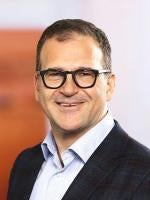The IPO market in the United States is continuing at its fastest pace since 2000. The year 2000 (over 350 IPOs)[1] was the last year of a 10 year boom in US IPOs that reached its peak in 1996 (over 650 IPOs). Since 2000, the strongest year for IPOs was 2004, with roughly 215 IPOs, approximately 140 of which were through the end of the third quarter. According to Renaissance Capital, there have been 152 US IPOs through the end of the third quarter this year.
What has that meant for emerging energy technology and renewables companies that might be looking to the capital markets? There has been some activity in 2013 – but not much compared to the broader market or to the more traditional energy and oil & gas sector.
For a handful of larger energy tech companies that are already public (eg, First Solar, Tesla, SunEdison), it has meant follow-on offerings to bolster cash for growth. These companies accessed the market over the last several months; Tesla (May 2013), First Solar (June 2013), and SunEdison (September 2013).
For a couple of energy companies with renewables portfolios, it has meant IPOs for “YieldCos”, vehicles that hold energy generating assets and pay a stream of dividends, such as NRG Yield (which went public in July 2013) and Pattern Energy (which went public in September 2013).
There has not been as much activity in initial public offerings for a range of emerging technology companies focused on energy. For example, biofuels producers are not accessing the IPO market again, though BioAmber, a renewable chemicals company was able to complete an IPO in May 2013. The offer price range was reduced from an initial $15-17 to $10-12 and the deal eventually got priced at $10 per share. Smart grid company Silver Spring Networks was able to complete an IPO in March 2013 – at a $17 per share price right in the middle of the expected pricing range. The company’s stock climbed to an intraday high of almost $34 in August 2013 but has come back to trading at right around the IPO price.
I expect that the market reception to the offerings from existing public cleantech companies, the YieldCo activity and the pockets of other cleantech IPOs so far in 2013 is enough to convince investors and companies looking for access to capital in the US public markets that they should be talking to their investment bankers. Let’s see if that results in 2013 IPOs or a plan for 2014.
[1] Please note that there will be some variance in the statistics for IPOs generally. This is because most data sets exclude extremely small initial public offerings and uniquely structured offerings that don’t match up with the more commonly understood public offering for operating companies. The data above is based on information from http://bear.warrington.ufl.edu/ritter/IPOs2012Statistics.pdf and Renaissance Capital www.renaissancecapital.com




 />i
/>i
